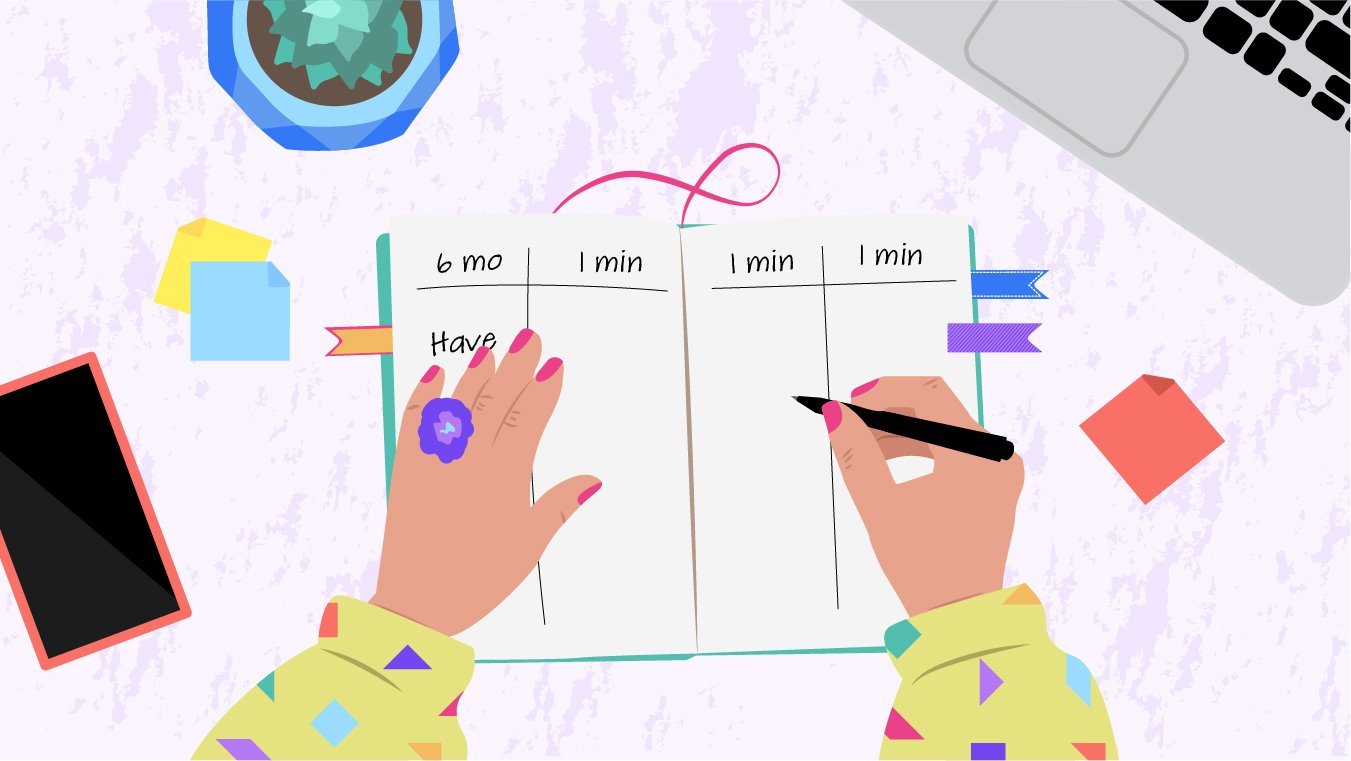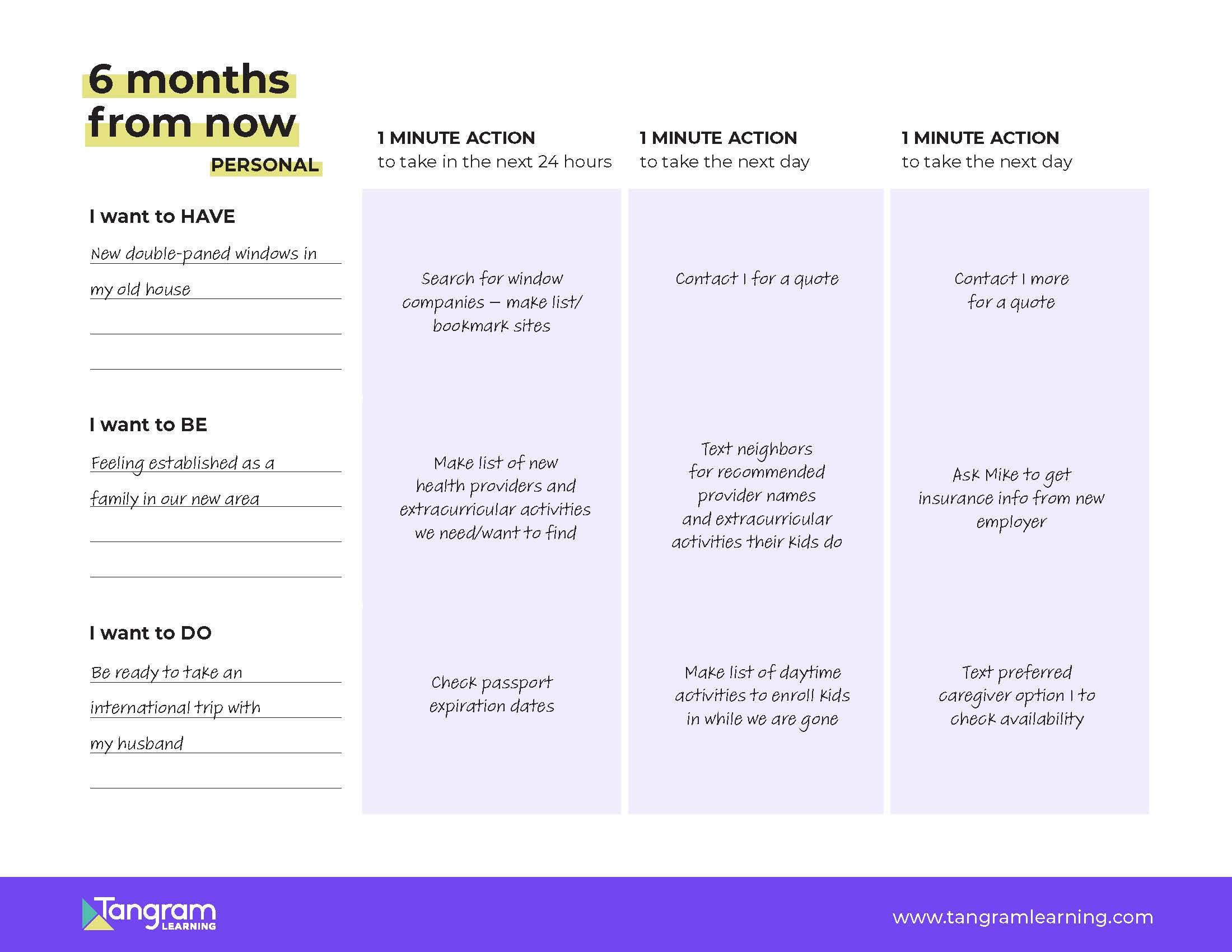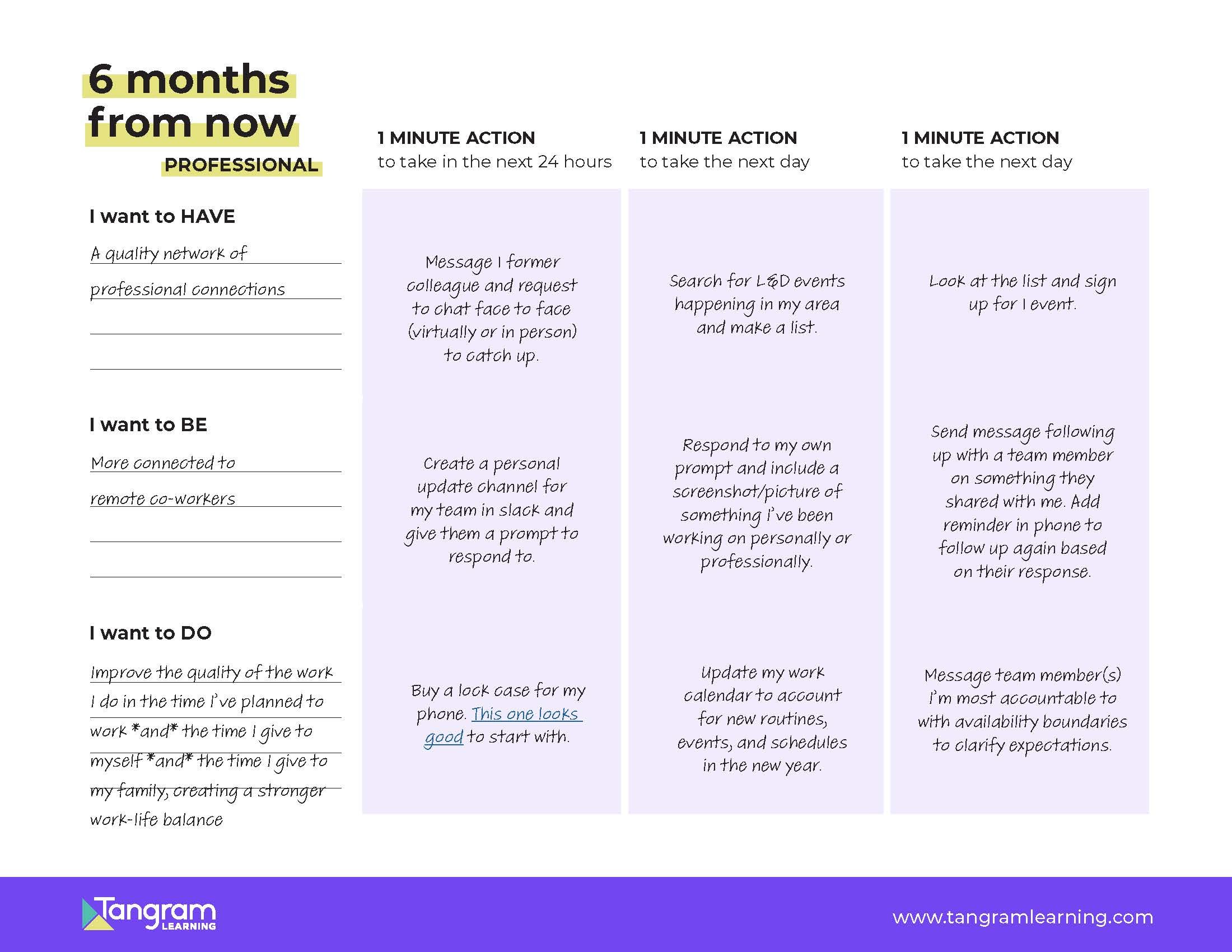How 1 Minute a Day Could Change Your Life
January 16 • Written by Kathryn Olson
I’m using a new tool to deliberately approach the new year for success, and I want you to join me! Stay tuned until the end where we give you a free tool!
Pull up a couch, crack open a laptop — let's simulate an accountability partnership for goal setting, shall we? I’m going to take you step-by-step through the process I'm using to make progress. By the end, we’ll have a pretty good plan for tackling several things that have been on our list to accomplish for ages. Let’s start with an important step that will help set an informed tone for the rest of our goal-setting session.
Step 1: Reflect
The things that have happened to me over the last year are strongly informing my approach to the coming year. My last year was very inward-focused. I manifested goals that I’ve been working toward for years, which makes me feel incredibly lucky. My husband got a job promotion that he’s been trying to get for five years. We moved our family to a neighborhood that feels like an amazing fit for us. We were also able to update the house we bought to fit our family’s needs.
The first half of the past year was consumed by buying, selling, and moving homes twice. Once we moved the final time, our kids were in daycare, preschool, and a new school district. We encountered not only new policies and routines, but also new sickness after new sickness that took us out — once to the hospital for oxygen support for our baby when a particularly nasty virus gave him bronchiolitis. Two of our three kids also broke bones this year.
These highs and lows happening simultaneously often felt overwhelming. Life didn’t slow down while they ran their course. Many times, great things happened at a cost. The greatest cost I noticed was in relationship currency — we achieved many things at the expense of effort exerted toward strengthening personal and professional relationships. You’ll notice below that some of my new goals reflect how acutely I felt this discrepancy.
Step 2: Choose Your Approach
So much of life just happens to you because you’re living around, working around, and/or taking care of others — is it even worth having goals when you know how easily they can get derailed? Radically, I’m going to say that it is. And I’ve taken inspiration from two different approaches to move forward as if I’m going to succeed. I’m sure you’ll recognize them both.
Approach #1: Making Projections: Some productivity experts make projections about where they might be and where they could be in the next year, in 5 years, in 10 years. Those projections can be strong, data-based, and fairly accurate. But here’s what I’ve noticed: if we work and live around humans, and most of us do, it’s just a fact that we can’t predict what exactly will be happening even in the next quarter. We have important hopes and goals, for sure. But for me, it’s easier to predict where I’m going to be energy-wise and availability-wise a mere 24 hours from now and one day at a time after that.
Approach #2: Consistency over Perfection: We know that habits are strong contributors to reaching a goal, which is where this approach shines. Have you really thought about what imperfect consistency looks like? I’m letting myself think about it for a minute. Sometimes it’s not pretty. For example, when journaling, it could look like several days in a row of writing “I’m writing this to be consistent, not because I have something profound to say.” It could look like several days in a row of getting up and doing a couple of push-ups. Are those things that take under a minute to do individually making a big difference? Probably not. But collectively, they end up getting us in the habit, and they increase our momentum. And soon enough, we’ve reached our goal.
But what if our goals aren’t habit oriented? Sometimes, they are just monumental things we want to do or things we dream of having. Can we still apply the principle of “1 minute a day makes a difference”? I believe we can. I tested this theory a few months ago. Neither of those approaches was quite fitting my needs, but I took a little from each to move to the next step.
Step 3: Plan
I wrote down one thing I wanted to have, one thing I wanted to be, and one thing I wanted to do in the next six months. Then I listed a one-minute action to take in the next 24 hours to get closer to it. Then the next 24 hours after that. Then the next 24 hours after that.
Ideally, if I could set aside three minutes each day for the next three days to work on these actions, I’d be making progress toward accomplishing three things that could change my life. It ended up looking something like this:
Can I tell you that one of these things was wildly successful? The windows. Within 2 days, I had scheduled 3 quote appointments, and I had all of them within a week. The next step takes a little longer — saving up the money to pay for the window. But even that can be broken down into 1-minute actions — choosing which quote I like best, finding a savings tracker, making a line item in our budget for it, etc.
What could this look like in a professional context? I took a moment just now to apply the same activity to the goals I’ve set, and this is what it looks like:
Step 4: Take a Small Action
The magic of the approach I took begins in the planning stage. The process of sitting down and writing out what those minute-long tasks would be is eye-opening! It’s a concrete answer to the question “Ok, what’s really my next step here? What would need to happen to get this project moving?”
The first first step here is downloading the same tool I used to make those plans above!
Writing your plan 3 one-minute steps out at a time creates a momentum you’ll be able to run with and make progress. The key is that it’s not just one small action, not just one minute today. It’s planning today (which, full disclosure, took me longer than a minute), then one minute tomorrow, the next day, and the next.
That sounds doable, right? You’ll be surprised at just how close you get to your lofty goals one minute at a time. Now go — give this a try! And if tomorrow comes and goes and you’ve taken only one of the actions you wrote down today, you’re still ending the day closer to checking something off your list.



